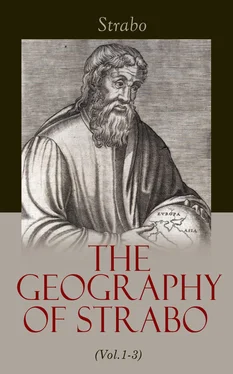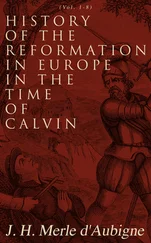Strabo - The Geography of Strabo (Vol.1-3)
Здесь есть возможность читать онлайн «Strabo - The Geography of Strabo (Vol.1-3)» — ознакомительный отрывок электронной книги совершенно бесплатно, а после прочтения отрывка купить полную версию. В некоторых случаях можно слушать аудио, скачать через торрент в формате fb2 и присутствует краткое содержание. Жанр: unrecognised, на английском языке. Описание произведения, (предисловие) а так же отзывы посетителей доступны на портале библиотеки ЛибКат.
- Название:The Geography of Strabo (Vol.1-3)
- Автор:
- Жанр:
- Год:неизвестен
- ISBN:нет данных
- Рейтинг книги:3 / 5. Голосов: 1
-
Избранное:Добавить в избранное
- Отзывы:
-
Ваша оценка:
- 60
- 1
- 2
- 3
- 4
- 5
The Geography of Strabo (Vol.1-3): краткое содержание, описание и аннотация
Предлагаем к чтению аннотацию, описание, краткое содержание или предисловие (зависит от того, что написал сам автор книги «The Geography of Strabo (Vol.1-3)»). Если вы не нашли необходимую информацию о книге — напишите в комментариях, мы постараемся отыскать её.
The Geography of Strabo (Vol.1-3) — читать онлайн ознакомительный отрывок
Ниже представлен текст книги, разбитый по страницам. Система сохранения места последней прочитанной страницы, позволяет с удобством читать онлайн бесплатно книгу «The Geography of Strabo (Vol.1-3)», без необходимости каждый раз заново искать на чём Вы остановились. Поставьте закладку, и сможете в любой момент перейти на страницу, на которой закончили чтение.
Интервал:
Закладка:
2. Posidonius informs us that Parmenides was the first to make this division of the earth into five zones, but that he almost doubled the size of the torrid zone, which is situated between the tropics, by bringing it beyond these into the temperate zones. 626But according to Aristotle the torrid zone is contained between the tropics, the temperate zones occupying the whole space between the tropics and the arctic circles. 627Both of these divisions Posidonius justly condemns, for the torrid zone is properly the space rendered uninhabitable by the heat. Whereas more than half of the space between the tropics is inhabited, as we may judge by the Ethiopians who dwell above Egypt. The equator divides the whole of this space into two equal parts. Now from Syene, which is the limit of the summer tropic, to Meroe, there are 5000 stadia, and thence to the parallel of the Cinnamon region, where the torrid zone commences, 3000 stadia. The whole of this distance has been measured, and it may be gone over either by sea or land; the remaining portion to the equator is, if we adopt the measure of the earth supplied by Eratosthenes, 8800 stadia. Therefore, as 16,800 is to 8800, so is the space comprised between the tropics to the breadth of the torrid zone.
If of the more recent measurements we prefer those which diminish the size of the earth, such as that adopted by Posidonius, which is about 180,000 stadia, 628the torrid zone will still only occupy half, or rather more than half, of the space comprised between the tropics; but never an equal space. [Respecting the system of Aristotle, Posidonius farther says,] “Since it is not every latitude which has Arctic Circles, 629and even those which do possess them have not the same, how can any one determine by them the bounds of the temperate zones, which are immutable?” Nothing however is proved [against Aristotle] from the fact that there are not Arctic Circles for every latitude, since they exist for all the inhabitants of the temperate zone, on whose account alone the zone receives its name of temperate. But the objection that the Arctic Circles do not remain the same for every latitude, but shift their places, is excellent. 630
3. Posidonius, who himself divides the earth into zones, tells us that “five is the number best suited for the explanation of the celestial appearances, two of these are periscii, 631which reach from the poles to the point where the tropics serve for Arctic Circles; two more are heteroscii, 632which extend from the former to the inhabitants of the tropics, and one between the tropics, which is called amphiscius, 633but for matters relative to the earth, it is convenient to suppose two other narrow zones placed under the tropics, and divided by them into two halves, over which [every year] for the space of a fortnight, the sun is vertical.” 634These zones are remarkable for being extremely arid and sandy, producing no vegetation with the exception of silphium, 635and a parched grain somewhat resembling wheat. This is caused by there being no mountains to attract the clouds and produce rain, nor any rivers flowing 636through the country. The consequence is that the various species 637are born with woolly hair, crumpled horns, protruding lips, and wide nostrils; their extremities being as it were gnarled. Within these zones also dwell the Ichthyophagi. 638He further remarks, that these peculiarities are quite sufficient to distinguish the zones in question: those which are farther south having a more salubrious atmosphere, and being more fruitful and better supplied with water.
CHAPTER III.
Table of Contents
1. Polybius supposes six zones: two situated between the poles and the arctic circles; two between the arctic circles and the tropics; and two between the tropics which are divided by the equator. However, it appears to me that the division into five zones accords best both with the order of external nature and geography. With external nature, as respects the celestial phenomena, and the temperature of the atmosphere. With respect to the celestial phenomena, as the Periscii and Amphiscii are thereby divided in the best possible manner, and it also forms an excellent line of separation in regard to those who behold the stars from an opposite point of view. 639With respect to the temperature of the atmosphere, inasmuch as looked at in connexion with the sun, there are three main divisions, which influence in a remarkable degree both plants, animals, and every other animated thing, existing either in the air, or exposed to it, namely, excess of heat, want of heat, and a moderate supply of heat. In the division into [five] zones, each of these is correctly distinguished. The two frigid zones indicate the want of heat, being alike in the temperature of their atmosphere; the temperate zones possess a moderate heat, and the remaining, or torrid zone, is remarkable for its excess of heat.
The propriety of this division in regard to geography is equally apparent; the object of this science being to determine the limits of that one of the temperate zones which we inhabit. To the east and west, it is true, the boundaries are formed by the sea, but to the north and south they are indicated by the atmosphere; which in the middle is of a grateful temperature both to animals and plants, but on either side is rendered intemperate either through excess or defect of heat. To manifest this threefold difference, the division of the globe into five zones becomes necessary. In fact, the division of the globe, by means of the equator, into two hemispheres, the one northern, wherein we dwell, and the other southern, points to this threefold division, for the regions next the equator and torrid zone are uninhabitable on account of the heat, those next the poles on account of the cold, but those in the middle are mild, and fitted for the habitation of man.
Posidonius, in placing two zones under the tropics, pays no regard to the reasons which influenced the division into five zones, nor is his division equally appropriate. It is no more than if he were to form his division into zones merely according to the [countries inhabited] by different nations, calling one the Ethiopian, another the Scythian and Keltic, 640and a third the Intermediate zone.
2. Polybius, indeed, is wrong in bounding certain of his zones by the arctic circles, 641namely, the two which lie under them, and the two between these and the tropics. The impropriety of using shifting points to mark the limits of those which are fixed has been remarked before; and we have likewise objected to the plan of making the tropics the boundary of the torrid zone. However, in dividing the torrid zone into two parts [Polybius] seems to have been influenced by no inconsiderable reason, the same which led us to regard the whole earth as properly divided by the equator into two hemispheres, north and south. We at once see that by means of this division the torrid zone is divided into two parts, thus establishing a kind of uniformity; each hemisphere consisting of three entire zones, respectively similar to each other. Thus this partition 642will admit of a division into six zones, but the other does not allow of it at all. Supposing you cut the earth into two portions by a line drawn through the poles, you can find no sufficient cause for dividing the eastern and western hemispheres into six zones; on the other hand, five would be preferable. For since both the portions of the torrid zone, divided by the equator, are similar and contiguous to each other, it would seem out of place and superfluous to separate them; whereas the temperate and frigid zones respectively resemble each other, although lying apart. Wherefore, supposing the whole earth to consist of these two hemispheres, it is sufficient to divide them into five zones. If there be a temperate region under the equator, as Eratosthenes asserts, and is admitted by Polybius, (who adds, that it is the most elevated part of the earth, 643and consequently subject to the drenching rains occasioned by the monsoons bringing up from the north innumerable clouds, which discharge themselves on the highest lands,) it would be better to suppose this a third narrow temperate zone, than to extend the two temperate zones within the circles of the tropics. This supposition is supported by the statements of Posidonius, that the course of the sun, whether in the ecliptic, or from east to west, appears most rapid in the region [of which we are speaking], because the rotations of that luminary are performed with a speed increased in proportion to the greater size of the circle. 644
Читать дальшеИнтервал:
Закладка:
Похожие книги на «The Geography of Strabo (Vol.1-3)»
Представляем Вашему вниманию похожие книги на «The Geography of Strabo (Vol.1-3)» списком для выбора. Мы отобрали схожую по названию и смыслу литературу в надежде предоставить читателям больше вариантов отыскать новые, интересные, ещё непрочитанные произведения.
Обсуждение, отзывы о книге «The Geography of Strabo (Vol.1-3)» и просто собственные мнения читателей. Оставьте ваши комментарии, напишите, что Вы думаете о произведении, его смысле или главных героях. Укажите что конкретно понравилось, а что нет, и почему Вы так считаете.












![Anne Blunt - A Pilgrimage to Nejd, the Cradle of the Arab Race. Vol. 2 [of 2]](/books/750183/anne-blunt-a-pilgrimage-to-nejd-the-cradle-of-the-thumb.webp)